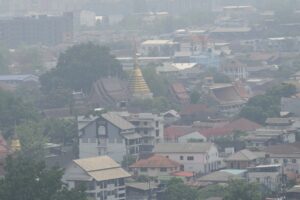Fire is deeply ingrained in local practices, making the country’s air pollution issue virtually intractable. This story was written by Associated Press writer Huizhong Wu. SAMOENG, Thailand (AP) — When the haze season comes, village chief Nanthawat Tiengtrongsakun and his tribesmen start preparing the land for fire.
They cut shrubs and trees on their small parcels of land, then set controlled burns that will clear their fields for planting — and send up plumes of smoke that add to some of the worst air in the world. It’s a slightly sweet gray haze that blurs the mountains in this part of northern Thailand to a faint outline, makes the air itself feel solid and turns breathing and swallowing painful for some. The Pakanyo, who have carried out the practice as long as they have lived in these hills about 90 minutes from Chiang Mai, a top tourist destination, say they get blamed by city dwellers for fouling the air and damaging forest land.

“We are the ethnic group that preserves the forest, but other people have the concern that we are destroying the forest,” Tiengtrongsakun said. “My argument to them is that we have been living (here) for generations. If we are the cause of the damage, the forest around us would have to be all gone.
” The Pakanyo are just a small part of a cluster of factors that show how deeply fire is ingrained in local practices and why Thailand’s air pollution issue is so intractable. During the haze season, from February to April, Chiang M.























